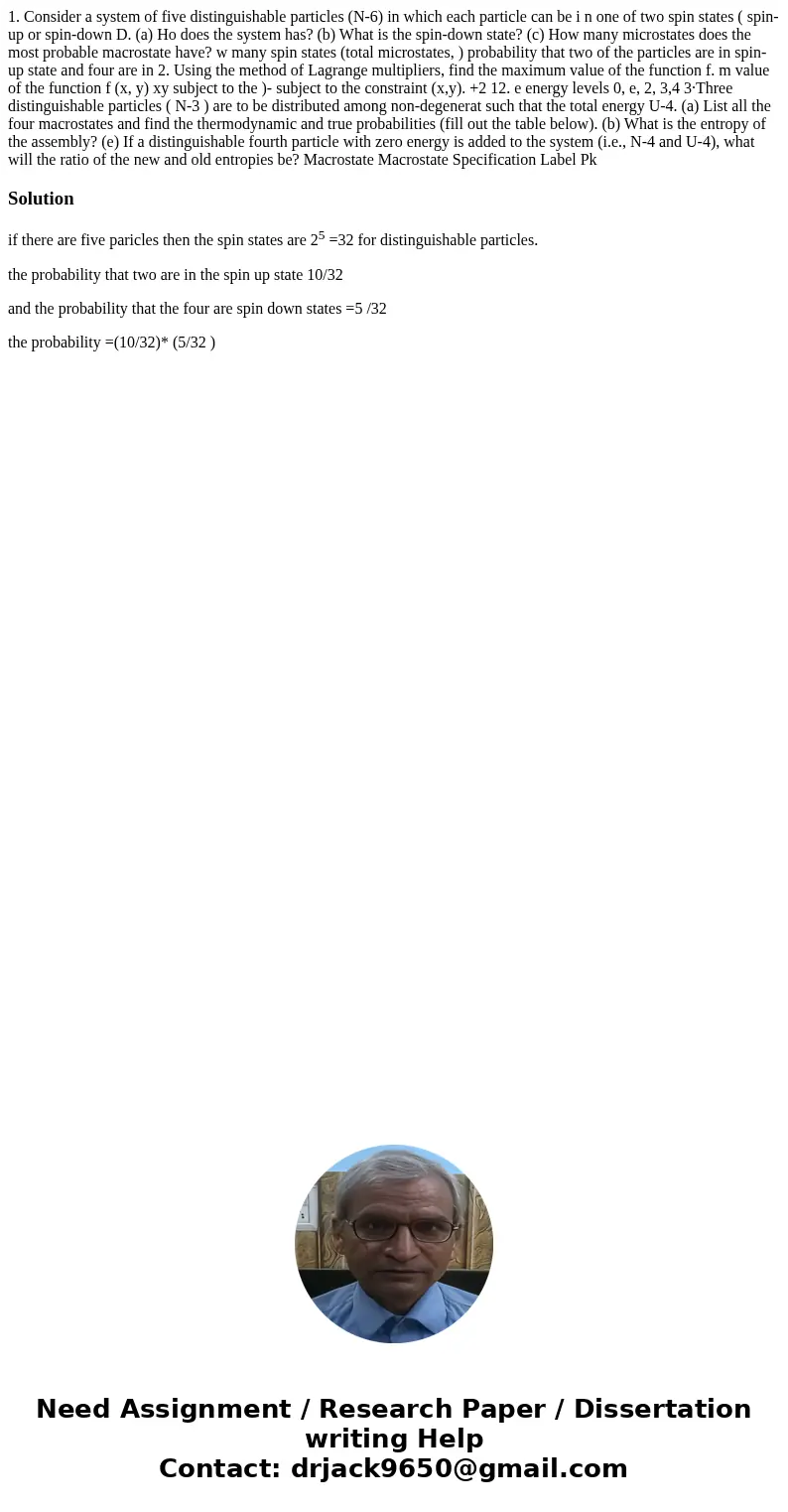1 Consider a system of five distinguishable particles N6 in
1. Consider a system of five distinguishable particles (N-6) in which each particle can be i n one of two spin states ( spin-up or spin-down D. (a) Ho does the system has? (b) What is the spin-down state? (c) How many microstates does the most probable macrostate have? w many spin states (total microstates, ) probability that two of the particles are in spin-up state and four are in 2. Using the method of Lagrange multipliers, find the maximum value of the function f. m value of the function f (x, y) xy subject to the )- subject to the constraint (x,y). +2 12. e energy levels 0, e, 2, 3,4 3·Three distinguishable particles ( N-3 ) are to be distributed among non-degenerat such that the total energy U-4. (a) List all the four macrostates and find the thermodynamic and true probabilities (fill out the table below). (b) What is the entropy of the assembly? (e) If a distinguishable fourth particle with zero energy is added to the system (i.e., N-4 and U-4), what will the ratio of the new and old entropies be? Macrostate Macrostate Specification Label Pk 
Solution
if there are five paricles then the spin states are 25 =32 for distinguishable particles.
the probability that two are in the spin up state 10/32
and the probability that the four are spin down states =5 /32
the probability =(10/32)* (5/32 )

 Homework Sourse
Homework Sourse